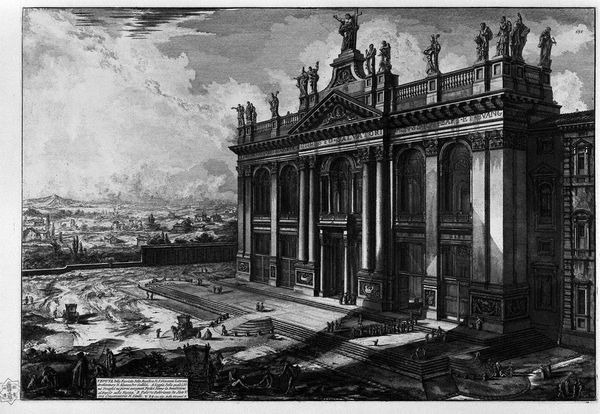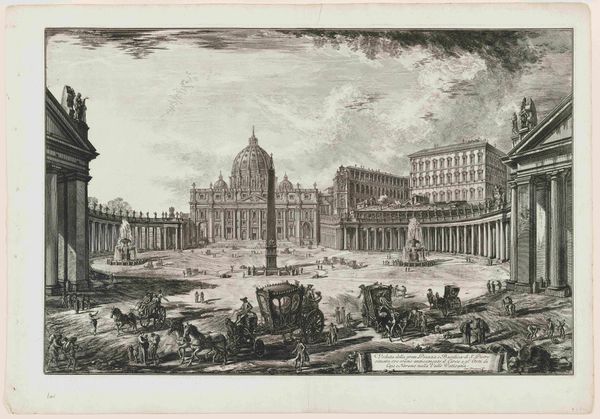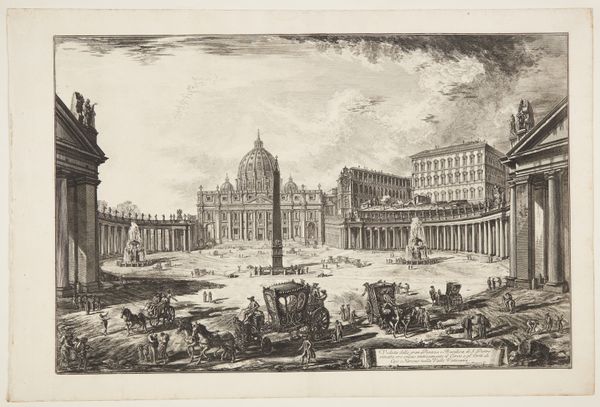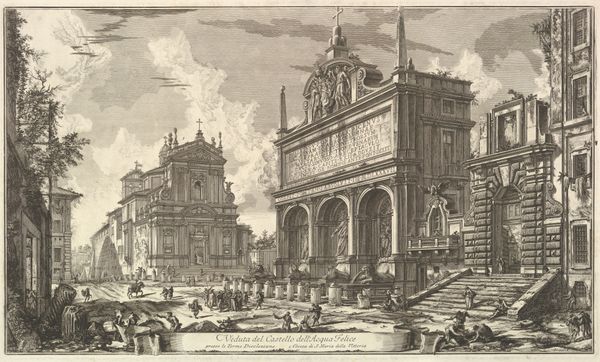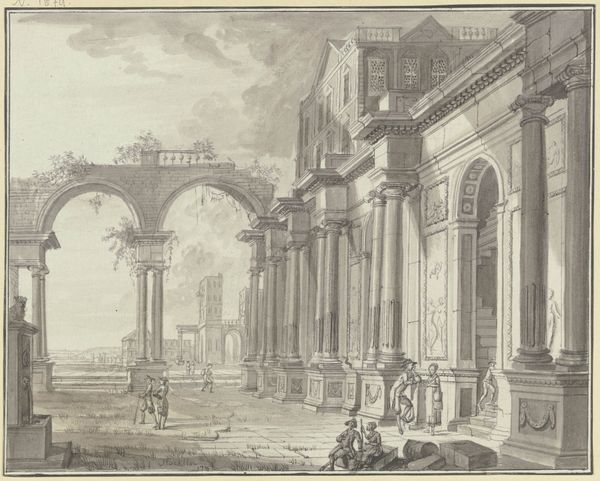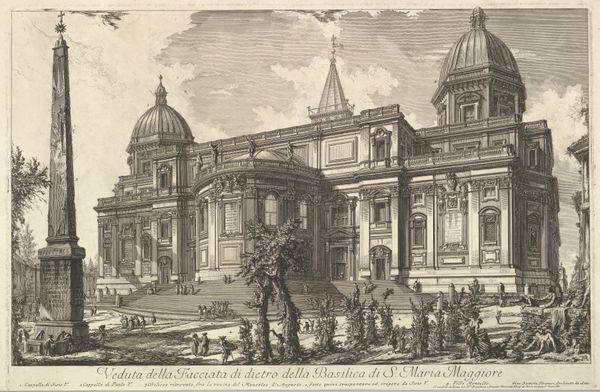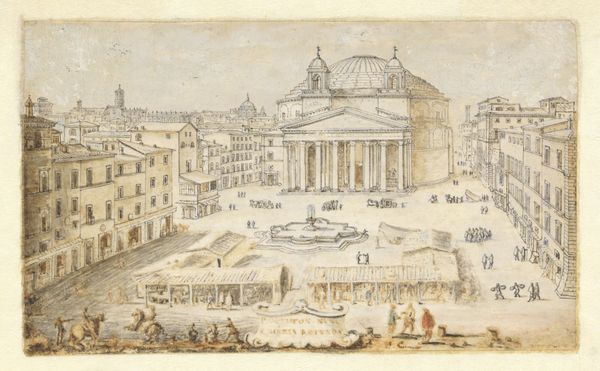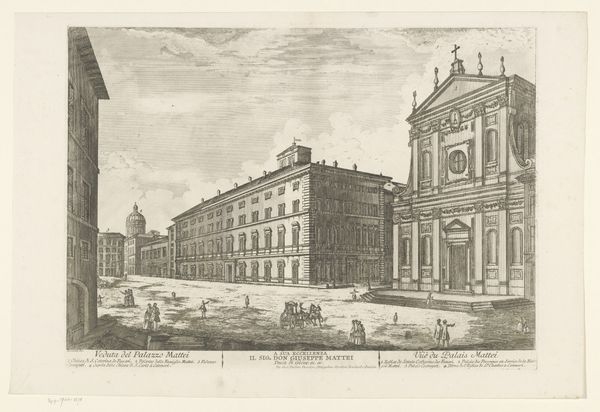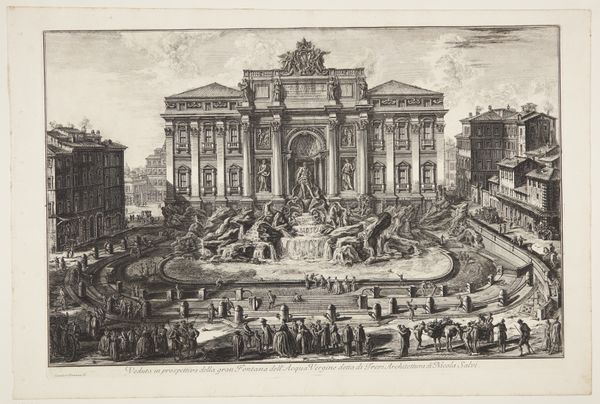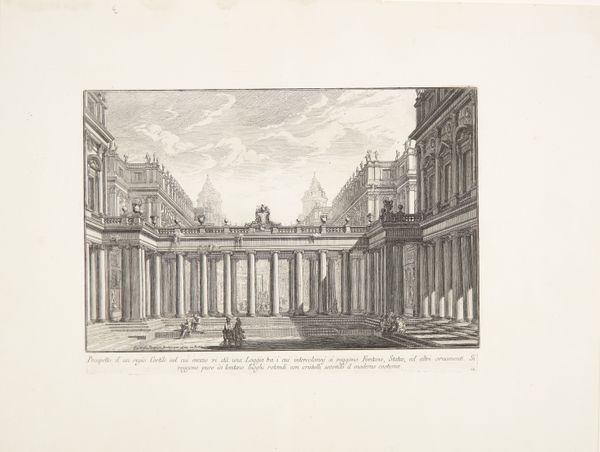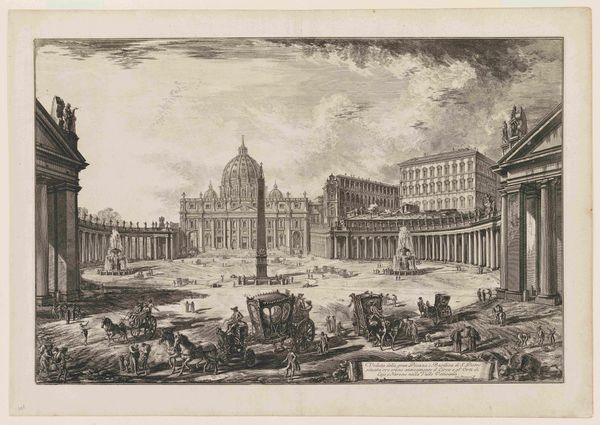
Dimensions: 19 3/8 x 27 7/8 in. (49.21 x 70.8 cm) (plate)21 5/8 x 30 5/16 in. (54.93 x 76.99 cm) (sheet)
Copyright: Public Domain
Curator: Looking at this print by Giovanni Battista Piranesi, completed around 1775, I’m immediately struck by the dramatic interplay of light and shadow. Editor: It feels…imperial. Intentionally overwhelming. A statement about power as much as architecture, really. Curator: Precisely. The subject is the Basilica of St. John Lateran, rendered here with Piranesi's masterful use of etching and engraving techniques. The print captures the grandeur of the baroque style so evident in its design. The eye is led across a wide piazza towards this dominating façade of the building. Editor: Absolutely. The deliberate placement of human figures—tiny against the scale of the basilica—highlights that power dynamic you mention. Look at the lines of people entering; they're dwarfed by the architectural prowess on display. Who are the people in coaches? Does the print valorize access to institutions like this, or comment on inequity? Curator: Well, consider Piranesi’s obsession with classical antiquity. This print, though depicting a Christian basilica, echoes that fascination with the architectural prowess of ancient Rome. He’s playing with form and perspective to evoke a sense of awe and perhaps to connect Rome's historical periods together in one monumental testament to civic power. Semiotics show us how forms build to carry complex societal meanings and associations. Editor: And beyond just Rome's historical eras. This type of architectural hyperbole has functioned as propaganda through centuries, right? Demonstrating power through imposing buildings. Look at that roof line, bristling with the statues. It visually shouts ‘authority’ across the landscape. In modern society, we would likely call it 'capitalist realism.' Curator: Perhaps. Though, what I find fascinating is the purely aesthetic achievement here: how Piranesi manages to suggest volume, texture, and light using only line. His manipulation of perspective and intricate detail are remarkable. The composition itself exemplifies a mastery of design principles. Editor: Yes, the rendering is stunning, even while what it is rendering…is a bit suspect. It asks important questions, though: who holds authority, and who is allowed through these gates? Curator: A potent piece then, from the Minneapolis Institute of Art, one which offers a masterclass in architectural rendering as well as a lesson in historical representation. Editor: Agreed, it invites many angles of approach, formal and contextual both.
Comments
No comments
Be the first to comment and join the conversation on the ultimate creative platform.
